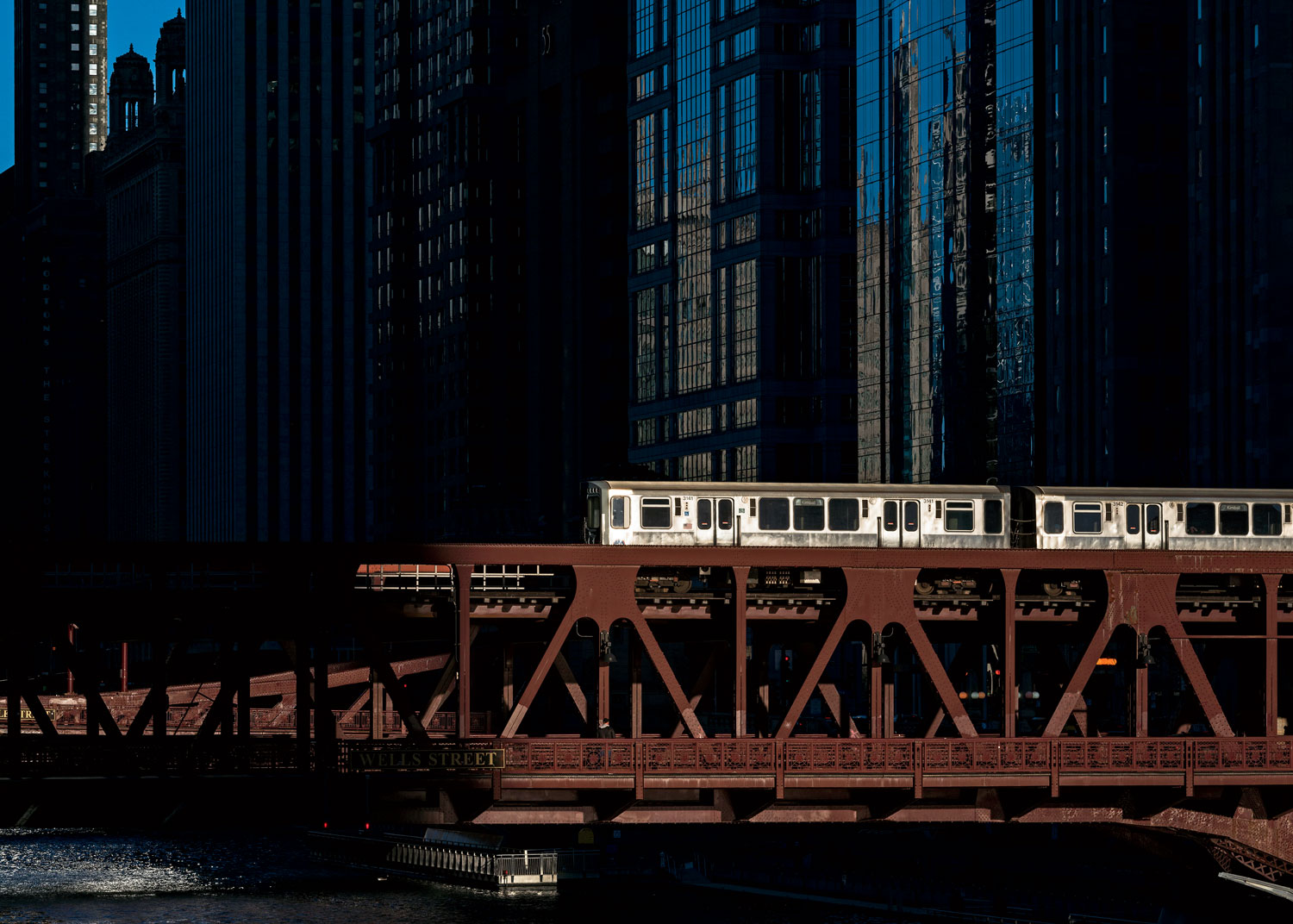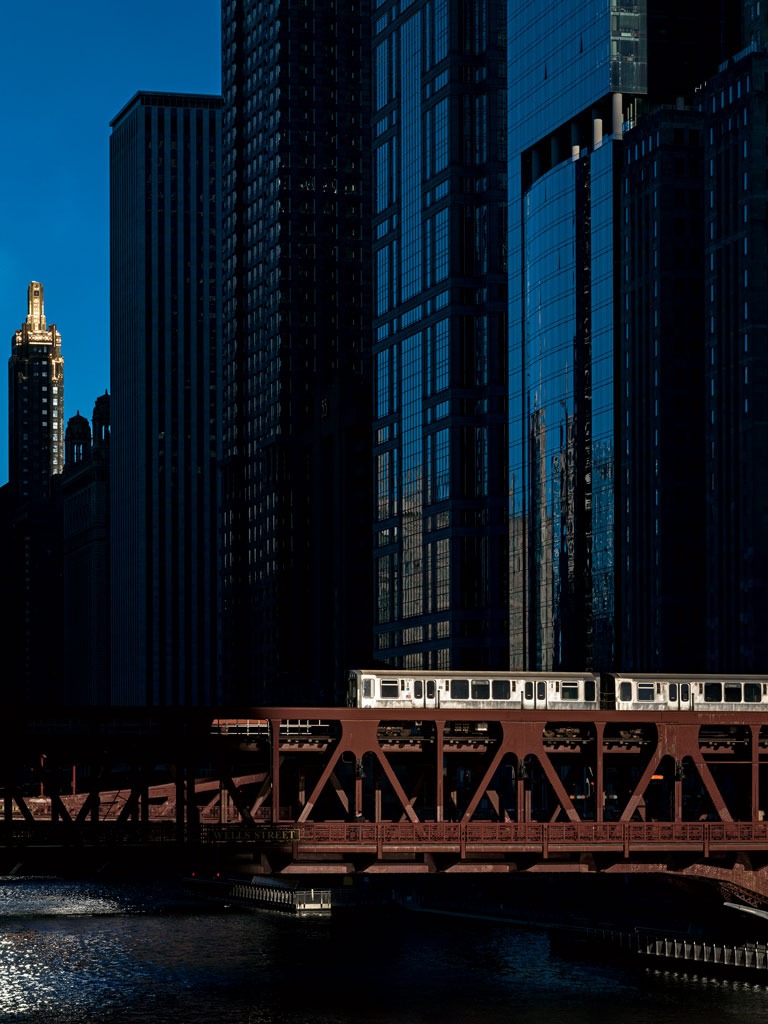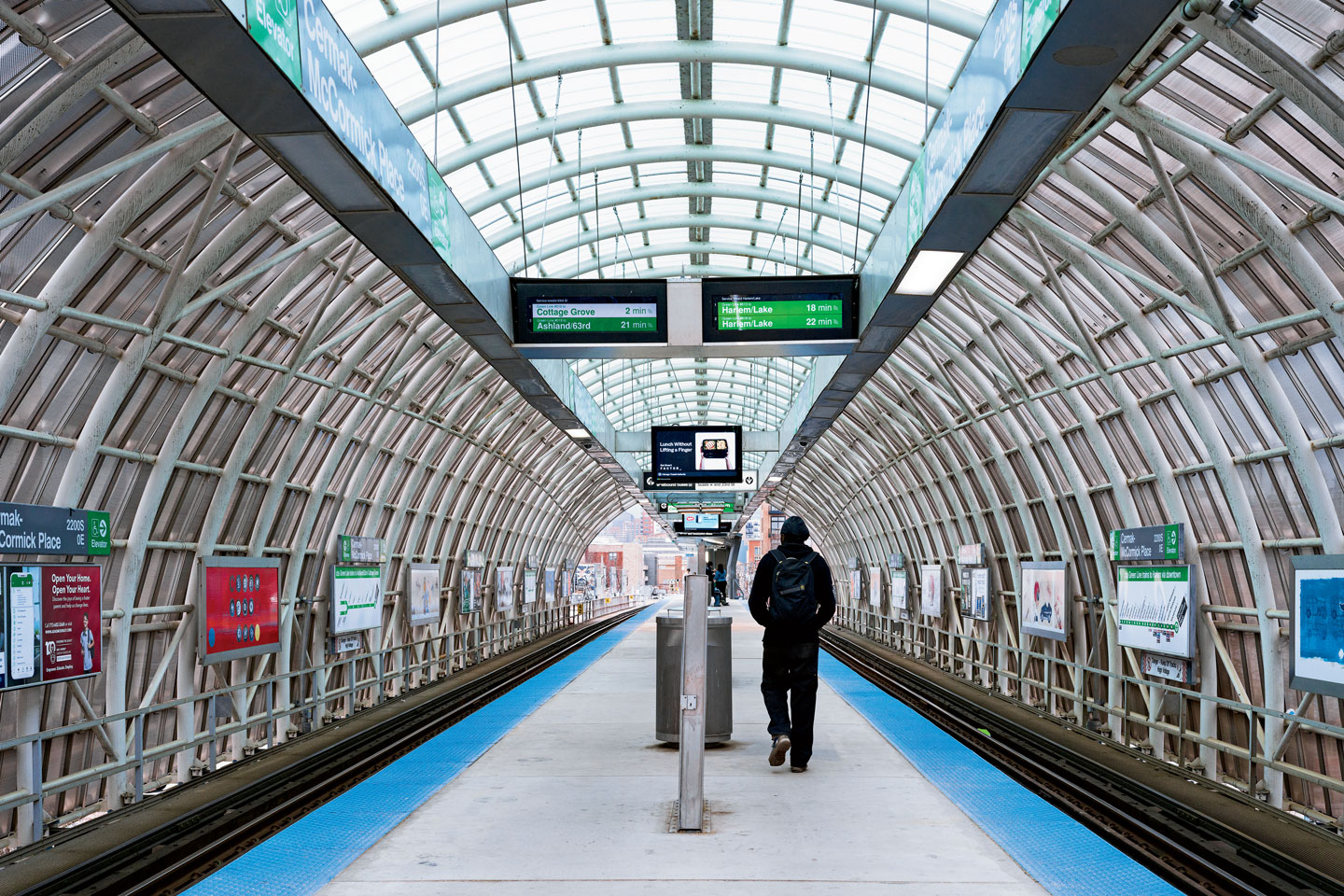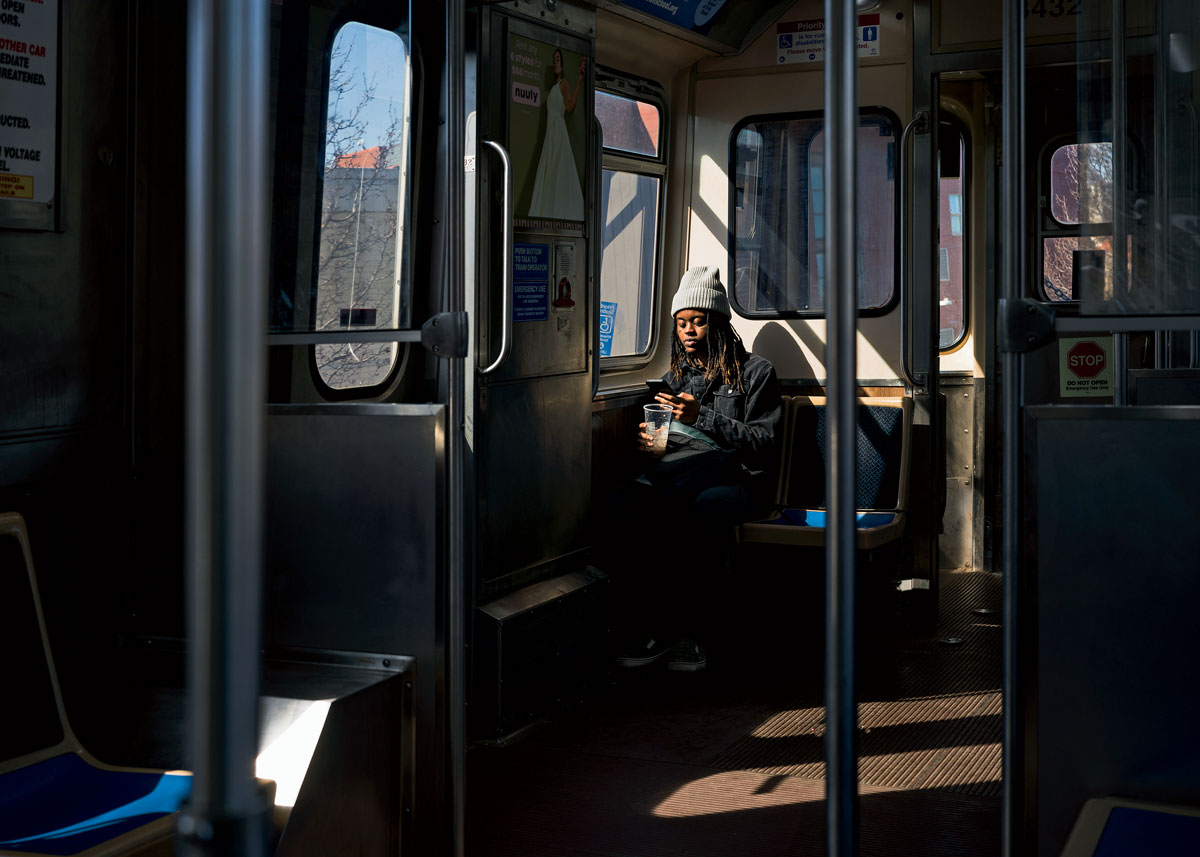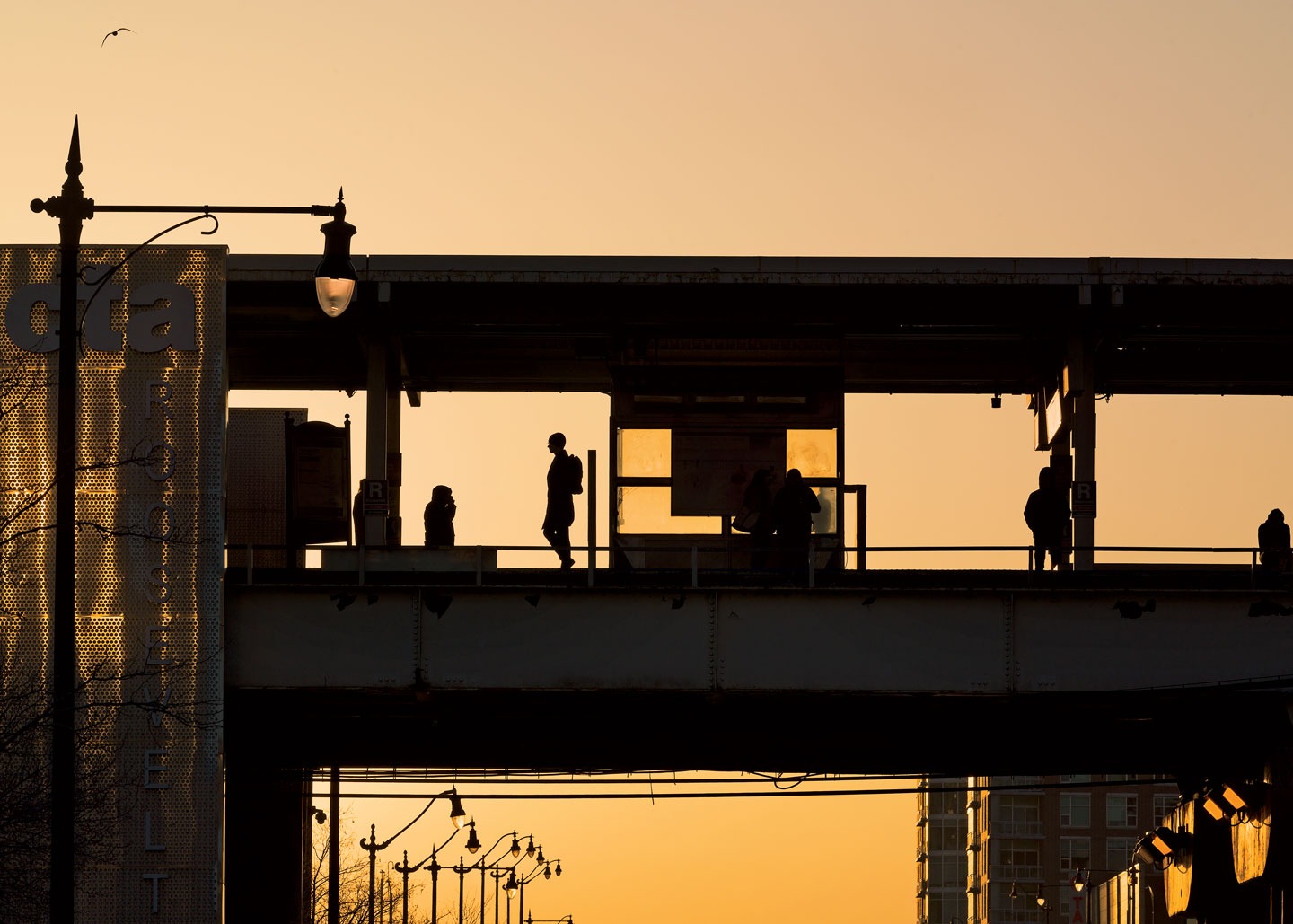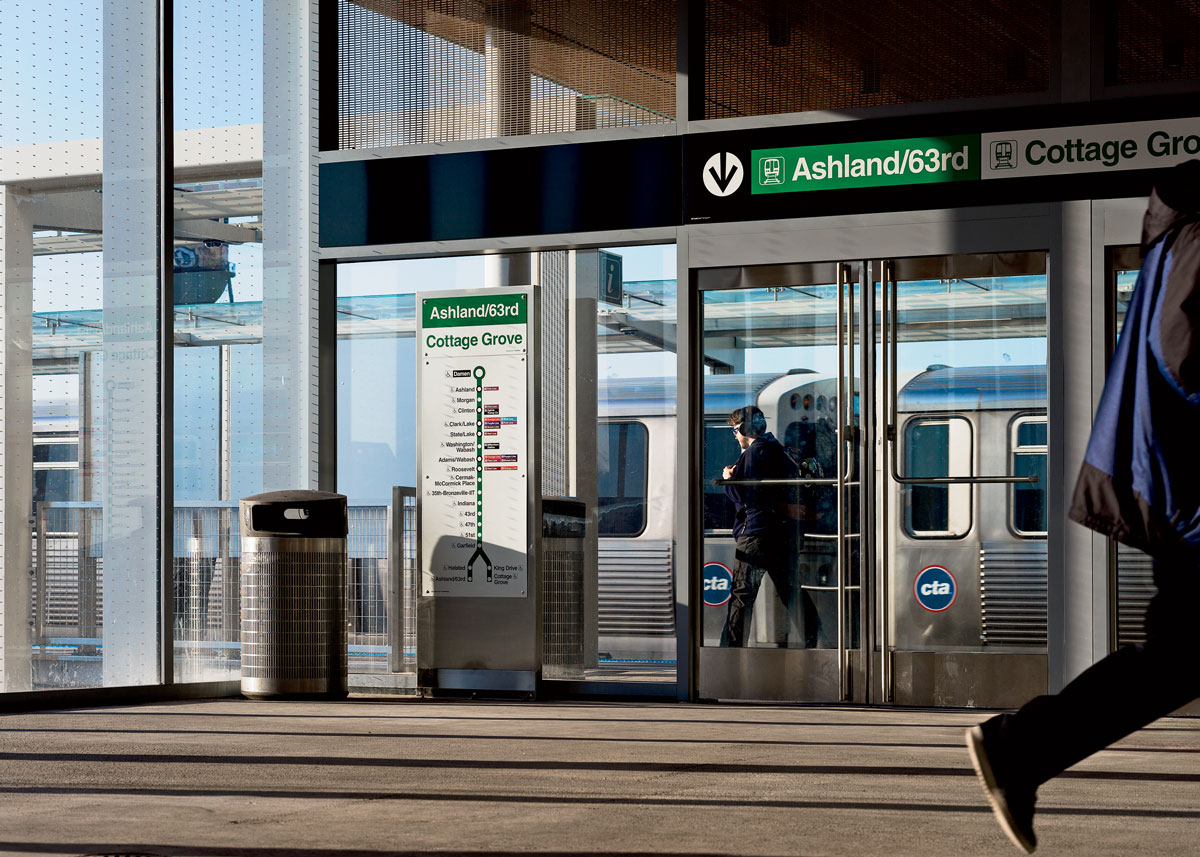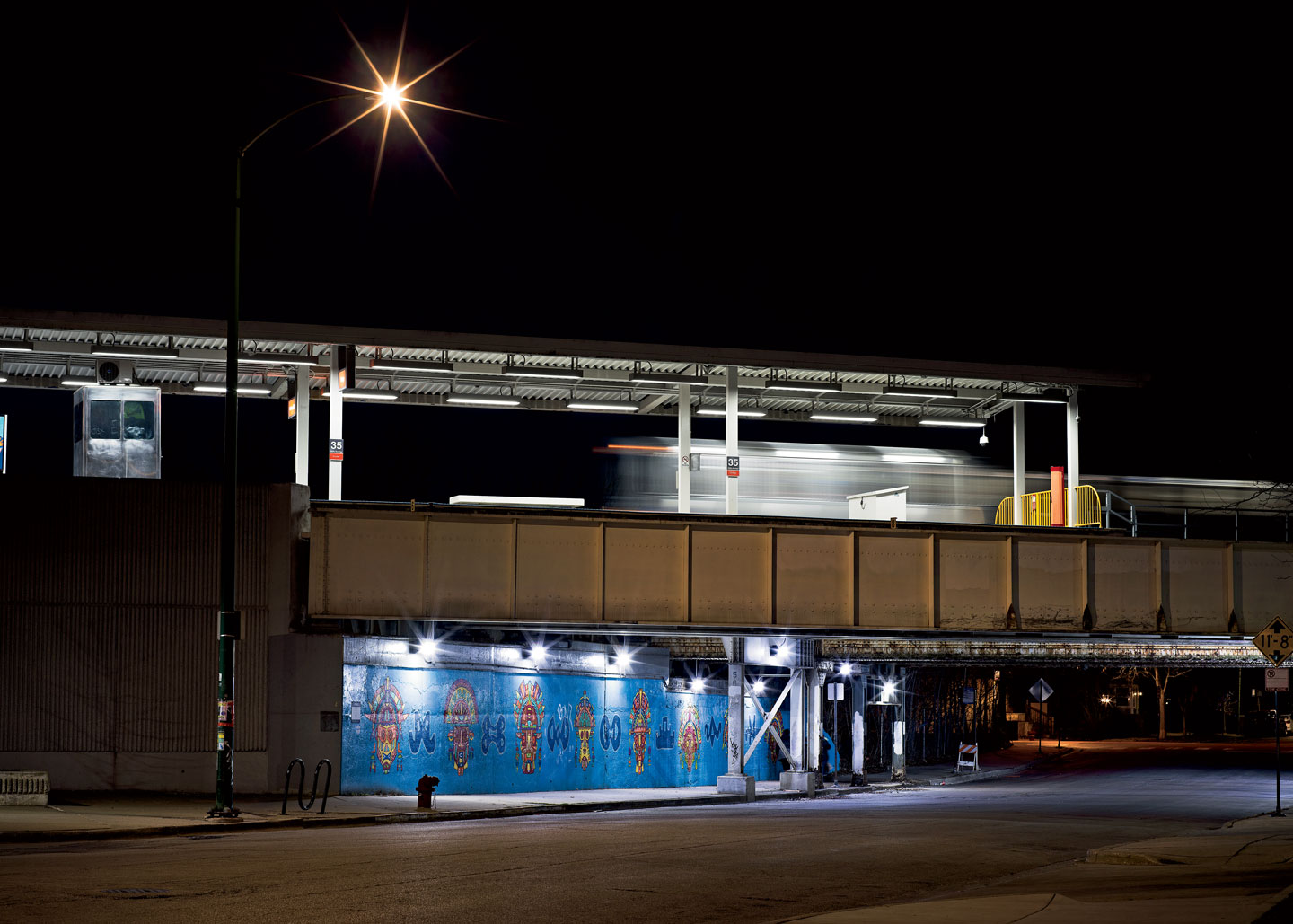Graham Garfield gazes pridefully from the northernmost perch of the Belmont L station in Lake View. Officially, Garfield is the general manager of RPM operations and communication coordination at the Chicago Transit Authority, a position he’s held for almost six years. RPM stands for Red and Purple Modernization, a multistage effort to upgrade the Red and Purple Line tracks, whose oldest section dates back 125 years. But the project, the first phase of which is estimated to cost $2.1 billion, was only part of why I was so keen on speaking with Garfield. He is also indisputably the L’s biggest superfan. As a freshman at the University of Illinois Urbana-Champaign in 1997, while his classmates were drinking beer and listening to Radiohead’s OK Computer, the Evanston native built the website Chicago-L.org. Even though it undeniably looks like it was made in 1997, it is somehow still the internet’s most valuable resource for information on just about everything having to do with the city’s train system — a vast repository of history, maps, fares, news articles, logos, ephemera, and even short fiction.
Garfield interned with the CTA in college and has worked there ever since, including while obtaining a master’s in urban planning and policy from the University of Illinois Chicago. He has more or less devoted his entire adult life to the L, and you could reasonably argue he is the foremost expert on it. That said, at various points in our conversation Garfield, with audible anxiety, goes out of his way to say he doesn’t speak for the CTA. Bald and bespectacled, with a salt-and-pepper beard, he’s wearing all-black workwear and heavy work boots. But this gruff outfit couldn’t be further from his personality, which is textbook Midwest nice. In a high-pitched, nasal voice, he says things like “It’s really neat!”
I met Garfield at the Howard station to ride south along the RPM’s first phase, which stretches from Bryn Mawr to Belmont. We got off at Belmont and walked to the edge of the platform. It’s from here where he now peers over a short yellow fence at massive, snaking concrete railways and points ahead. About 100 feet in front of him, galumphing around the tracks, are eight construction workers in neon yellow vests and white hardhats. If you ride the L, you see these people a lot, emerging from the shadows of a tunnel or precariously sidestepping along an elevated railway. Garfield explains that the CTA can’t modernize the Red and Purple Lines all at once, because trains still need to run during construction, so it’s done piecemeal. If you’ve been to the Belmont station in recent years, you’ve witnessed this work, enormous gray pillars gradually growing out of the ground as you look north.
On this Wednesday afternoon in late January, as the project nears completion, Garfield describes various tracks that are about to reopen the following Monday. “It’s kind of a big weekend,” he says. “After five years, all the things we’ve been working toward are slowly, one by one, coming online.”
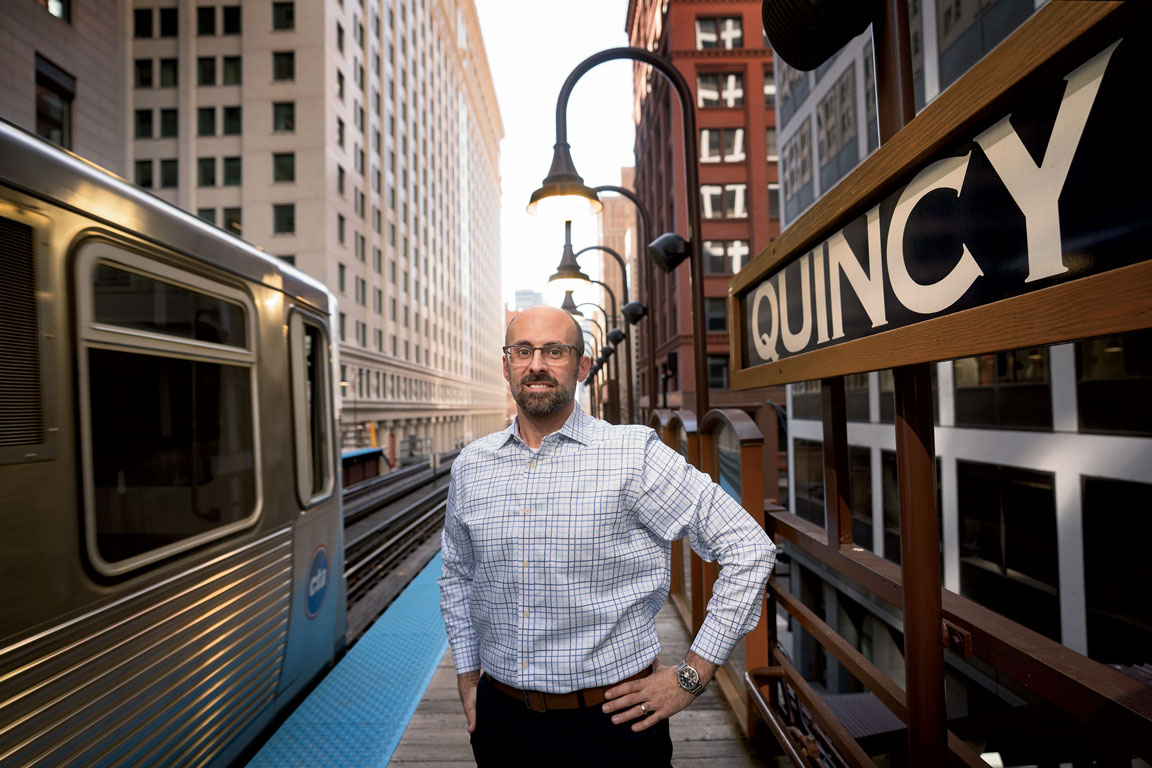
My trip with Garfield from Howard to Belmont was pleasant. He spoke at length and with a half smile about L lines that never came to be, like a West Loop subway, and mused about misconceptions of rail transportation. “It’s an oversimplification to suggest that the L is still a 19th-century technology,” he said. “It is no more so than airplanes are still a Wright brothers technology.” He also likened his job to an act of service: “I was raised in a household that believed in doing your part.”
But my journey to meet him was much less enjoyable. Though the CTA’s tracker had said my bus would show up in 10 minutes, I ended up waiting in the cold for half an hour. At the Wilson L station, the CTA display had the next northbound train arriving in eight minutes; it was five minutes late. When I finally boarded, someone was openly smoking weed in the car, which smelled like urine and stale cigarettes.
These kinds of trips used to be outliers, but they’re becoming remarkably common. Commuters complain about “ghost trains,” which appear on the tracker but never arrive. There’s also been a sharp increase in slow zones, where trains move at a crawl because of deteriorating tracks. As a result, those that do arrive are often late: Last year, the CTA recorded 2,775 delays of 10 minutes or more. And according to an analysis by the grassroots transit advocacy group Commuters Take Action, only 52% of trains arrived at their stations on time. (“On time” here means the train showed up within a 25 percent window, based on the scheduled interval between trains, on either side of its slated arrival.)
But while waiting for the L is irritating, riding it can be even worse. Social media accounts like CTA Fails document seats covered in trash and food and floors littered with cigarette butts. Many riders feel unsafe these days, and for good reason: Last September, WBEZ reported that the violent crime rate on CTA trains and buses had tripled since 2015. And while incidents such as the killing of four passengers on a Blue Line train last year get the most attention, plenty of riders also have been scared away by pervasive antisocial behavior on the trains, such as smoking. On my most active text thread, a friend recently wrote: “I’m on the redline and everyone is nodding off or in some kind of fent stance. Very dark!!”
Of all the people I interviewed for this story — including CTA officials, politicians, and transit experts and advocates — roughly half admitted they no longer ride the L. Jacky Grimshaw, a senior director at the nonprofit Center for Neighborhood Technology, told me she opts for the Metra and bus over the Green Line to get to the Loop these days, mostly because of convenience but also out of safety concerns. “I was getting nothing but horror stories,” she says. Outside my own home office window, I can see Brown Line trains rumbling along the ground-level tracks; at night, the entire eight-car convoy is often empty.
Whereas the L was once a societal leveler, the means by which Chicagoans of all types went to their job or school or party, frustration with its unreliable service and fears about safety are leading those who can to abandon it.
At the peak in 2015, nearly 768,000 people boarded the L on an average weekday, according to the CTA. Last year, that number was just 389,000 — a drop of almost 50 percent in less than a decade. Whereas the L was once a societal leveler, the means by which Chicagoans of all types went to their job or school or party, frustration with its unreliable service and fears about safety are leading those who can to abandon it.
The L’s struggles come at a moment of fiscal reckoning. After ridership took a nosedive during the pandemic, the region’s mass transit agencies — the CTA, Metra, and Pace, all under the oversight of the Regional Transportation Authority — received a combined $3.5 billion in federal funding to maintain their systems until people returned to trains and buses in full force again. (The CTA’s $2.16 billion 2025 budget includes $579 million in federal relief funds.) By the end of this year, the CTA will have only $48 million remaining of the $2.2 billion it received, far less than the projected 2026 budget deficit of $605 million. The “fiscal cliff,” as it’s ominously known, facing regional transit as a whole has been cited as $770 million, but state Representative Kam Buckner, one of the leading legislators working on a solution, believes the actual budget gap legislators need to fill if they truly want to fix the system is much higher: “That number is a grave miscalculation. By the time everything gets sorted out, it’s between $1 billion and $1.5 billion.”
If the city and state do not find a fix, we’ll be on the path to transit dystopia. The CTA, along with Metra and Pace, will have to cut staffing. It may also mean a reduction of routes across the region and the end of 24/7 service for the CTA’s bus and rail networks. If you think wait times on the L are bad now, they will get way worse: The RTA has said trains could run 10 to 25 percent less frequently and that more than 50 stations could be closed or see significantly reduced service. This would push even more riders away, which spells a downward spiral for the L.
That would be a tragedy. There is no Chicago without the L. It’s part of the fabric of our civic identity. Here, you don’t say “downtown.” You say “the Loop,” because the buildings that form our skyline couldn’t have grown so tall without the circle of elevated railways beneath them. A great city doesn’t just deserve a great transit system — it needs one. But getting the L back to being a source of pride will mean tapping into the same ingenuity that made it a triumph of civic engineering in the first place.



